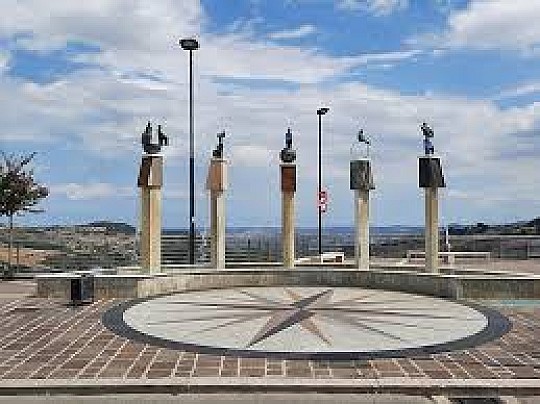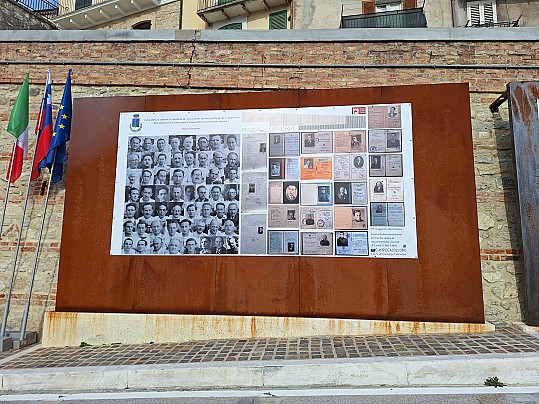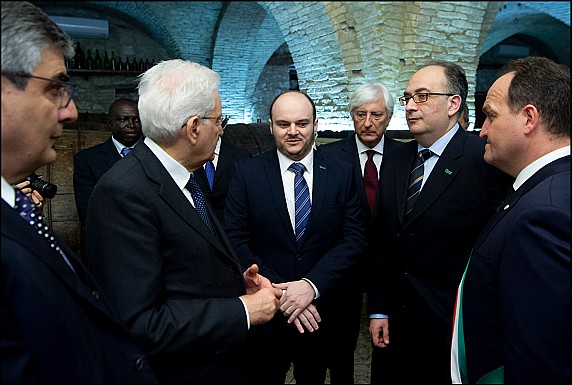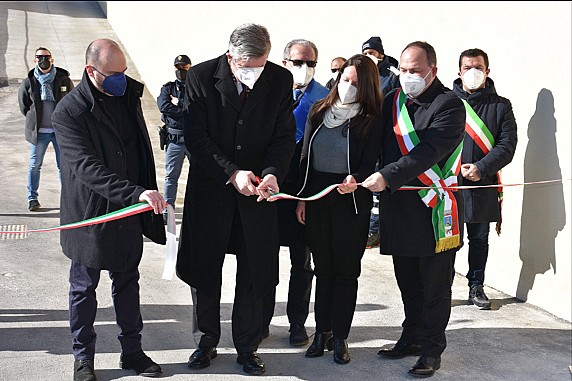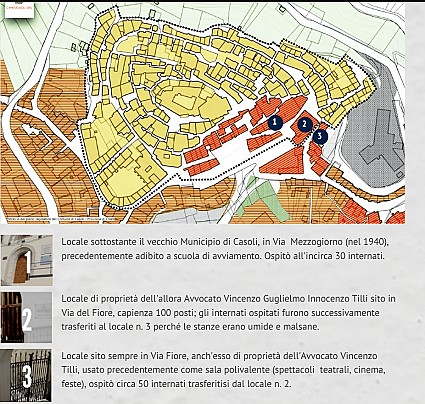Piazza della Memoria e Polo Commemorativo
Accanto alla chiesa, si trovano vari monumenti commemorativi, tra cui quelli ai caduti di tutte le guerre e all'emigrante.
Quest’area, formata dalla piazza, dal Memoriale, dall’ex edificio sede dell’amministrazione comunale e da una parte del Palazzo Tilli con la sua dépendance, rappresenta un tassello fondamentale della storia di Casoli, inserito nel più ampio scenario della Seconda guerra mondiale.
Il 10 giugno 1940, dal balcone di Palazzo Venezia a Roma, Benito Mussolini annunciò al popolo italiano l’entrata in guerra dell’Italia a fianco della Germania nazista. Il primo tragico riflesso del conflitto si manifestò, come prevedibile, con la chiamata alle armi dei cittadini casolani.
Tuttavia, la comunità si trovò ben presto ad affrontare una contingenza inattesa: l’istituzione, nel paese, di un campo di concentramento per internati civili.
L’amministrazione comunale ha inaugurato, il 27 gennaio 2022, un Memoriale in ricordo degli ebrei perseguitati dalle efferate leggi razziali fasciste e degli slavi, considerati politicamente pericolosi dopo l’invasione della loro terra da parte delle truppe dell’Asse.
Sottoposti a ordini di restrizione, gli ebrei furono internati a Casoli dal 1940 al 1942, mentre gli slavi vi rimasero dal 1942 al 1944. La Piazza della Memoria e l’annesso Memoriale sorgono in una zona prossima agli alloggi degli internati.
Il campo era inizialmente composto da due edifici principali:
-
le cantine di Palazzo Tilli (circa 50 posti)
-
i locali al piano terra dell’ex Municipio (circa 30 posti)
Successivamente, gli internati furono trasferiti nella dépendance del palazzo, all’epoca adibita anche a sala teatrale, cinema e spazio per feste pubbliche.
Nel complesso, furono internati a Casoli 108 ebrei e 110 ex-jugoslavi, in periodi diversi. Tra gli ebrei, dieci furono deportati dai nazisti nei campi di sterminio: nove ad Auschwitz e uno alla Risiera di San Sabba, dove morirono nelle camere a gas.
Questo complesso storico rappresenta oggi un punto di riferimento per la comunità e per i visitatori, poiché anche nel suo piccolo contribuisce a mantenere viva la memoria dell’Olocausto, affinché essa non venga dispersa nella nebbia dell’oblio.
Ai due lati di Corso Umberto I, sul confine inferiore della bella Villa Comunale, e nella Piazza di Santa Reparata, dove la vista spazia su una parte del territorio orientale di Casoli, sul fiume Aventino, sul fiume Sangro, sugli insediamenti industriali, sorgono i simboli per non dimenticare le grandi tragedie della comunità casolana nel corso del ’900.
1. Monumento ai militari caduti e dispersi in guerra
I soldati casolani morti per l’Italia sono stati 227, fra i quali due patrioti che combatterono contro i nazisti nella Seconda guerra mondiale.
Inaugurato il 25 giugno 1955, fu realizzato su bozzetto dello scultore Oscar Lamura Bernabeo.
2. Monumento alle vittime civili di guerra
Durante la battaglia fra i tedeschi e gli alleati sul fronte della Linea Gustav, nel nostro paese morirono 53 civili casolani, di cui 16 ragazzi e ragazze di età fra gli 11 e i 18 anni, 4 bambini e bambine e una piccola di un anno.
Martiri innocenti della Seconda guerra mondiale a causa di azioni militari:
-
bombardamenti aerei e terrestri dei due eserciti
-
scoppio della polveriera tedesca
-
esplosioni degli ordigni bellici abbandonati e delle mine antiuomo
L’opera, realizzata in marmo resina, è un bassorilievo con quattro figure umane, un angelo, il simbolo papale ed una colomba.
Inaugurato il 7 giugno 1997, il monumento, posto alla sinistra di quello dei militari caduti in guerra, è opera dell’artista Vittorio Benedetto Piccorossi di Ortona.
3. Monumento all’emigrante
È stato inaugurato l’8 giugno 2005. Ideato dallo scultore Vito Bucciarelli, sorge sull’altro lato della strada rispetto ai primi due.
È dedicato al triste fenomeno della migrazione da Casoli:
-
a cavallo dell’Ottocento e del Novecento
-
negli anni del secondo dopoguerra
È costituito dall’emiciclo in marmo della vasca per raccogliere l’acqua che sgorga dai capitelli in marmo, provenienti dai diversi continenti della Terra, posti su cinque colonne.
Sui capitelli si notano cinque piccole sculture di figure simboliche. Il tutto poggia su una base marmorea con la Rosa dei venti in granito, dove è collocata una valigia, divenuta il triste emblema dell’emigrazione.
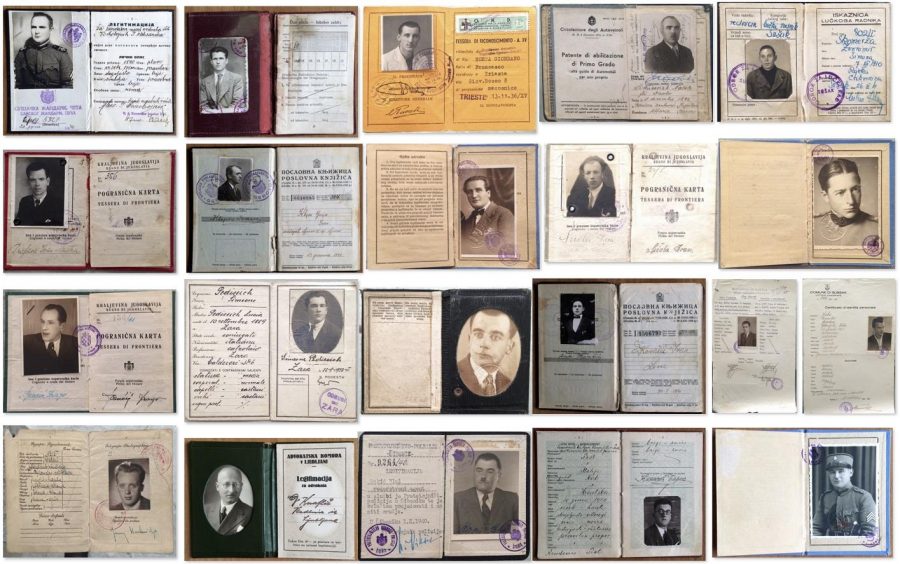
 English Version
English Version
Commemorative Pole 
On the two sides of Corso Umberto I, on the lower border of the beautiful Municipal Villa, and in the Square of Santa Reparata where the view sweeps over a part of the eastern territory of Casoli, on the Aventino river, on the Sangro river, on the industrial settlements, there are the symbols not to forget the great tragedies of the Casolan community during the ’900. a) Monument to the fallen and missing soldiers in war. The Casolani soldiers who died for Italy were 227, among them two patriots who fought against the Nazis in World War II. Inaugurated on June 25, 1955, it was made on a sketch by sculptor Oscar Lamura Bernabeo. b) Monument to civilian victims of war. During the battle between the Germans and the Allies on the front of the Gustav Line, 53 civilians died in our country, of which 16 boys and girls aged between 11 and 18 years, 4 boys and girls and a one-year-old girl. Innocent martyrs of the Second World War due to military actions: air and land bombings of the two armies, the outbreak of the German powder keg, explosions of abandoned war devices and anti-personnel mines. The work, made of resin marble, is a bas-relief, with four human figures, an angel, the papal symbol and a dove. Inaugurated on June 7, 1997, the monument, placed to the left of that of the fallen soldiers in war, is the work of the artist Vittorio Benedetto Piccorossi from Ortona. c) Monument to the emigrant. It was opened on June 8, 2005. Designed by sculptor Vito Bucciarelli, it stands on the other side of the road from the first two. It is dedicated to the sad phenomenon of migration from Casoli at the turn of the nineteenth and twentieth centuries and in the years after the Second World War. It consists of the marble hemicycle of the tank to collect the water that flows from the marble capitals, coming from the different continents of the Earth, placed on five columns. On the capitals you can see five small sculptures of symbolic figures. All on a marble base with the granite Wind Rose where a suitcase is resting, which has become the sad emblem of emigration.
Memorial Area 
This area, formed by the Square, the Memorial, the former Municipal Building (seat of the municipal administration), and a part of Palazzo Tilli with its outbuilding, recalls a piece of the history of Casoli, inserted in the wide scenario of the Second World War. On June 10, 1940, from the balcony of Palazzo Venezia in Rome, Benito Mussolini announced to the Italian people the entry into the war of Italy on the side of Hitler's Germans. The first sad taste of what the conflict would mean for our country came, as was obvious, with the call to arms of our fellow citizens. The Casolani found themselves, instead, facing an unforeseen contingency connected to the beginning of hostilities: the establishment in the country of a concentration camp for internees. On January 27, 2022, the administration inaugurated a Memorial in memory of: the Jews subjected to internment, as a result of the brutal racial laws of the Duce, and the Slavs, considered politically dangerous after the invasion of their land by Axis troops. The Jews lived in the Casoli Camp from 1940 to 1942 and the Slavs from 1942 to 1944. The Memorial Square and the adjoining Memorial were built in an area close to the internees' quarters. The Camp was originally formed by two main buildings: the cellars of Palazzo Tilli (with a capacity of about 50 seats), and the premises on the ground floor of the former Municipal Town Hall, with a capacity of about 30 seats. Shortly after, the internees from the cellars were transferred to the annex of the building, then also used as a room for theatrical performances, cinema, and parties. In total: 108 Jews and 110 Yugoslavs were interned. Ten Jews who lived in the Casoli Camp, deported by the Nazis to the extermination camps, died in the gas chambers (nine in Auschwitz and one in the Risiera di San Sabba, the ancient San Sabba rice mill). The complex is a point of reference for our community and for visitors, because it too, in its small way, contributes to keeping the memory of the Holocaust alive, so that it does not get lost in the fog of oblivion.
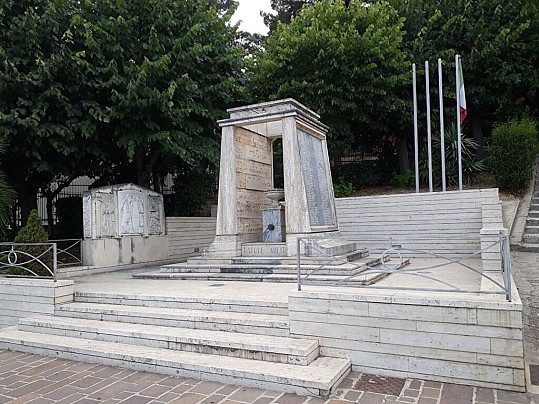
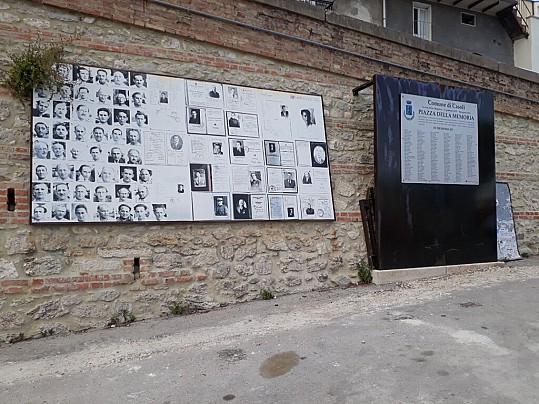
-(6)-thumb.jpg)
